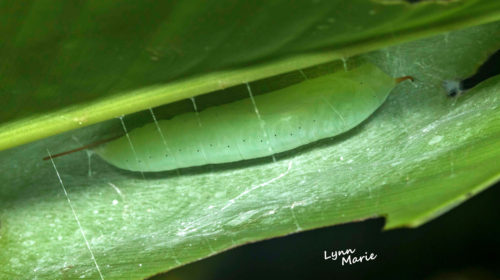Brazilian Skipper (Calpodes ethlius) is native to Mexico, Central America, and the northern part of the South American continent, and can also be found as far south as the northern parts of Argentina. They have been found in many other areas such as the Galapagos islands and the west indies in the Caribbean Sea. In the United States, it has established itself in Texan, southern Arizona, and Florida. The adults are primarily brown; the female’s forewing can be slightly larger ranging from 22 to 27 mm, while the male’s forewing is about 23 to 24 mm. The forewings are dark brown with five transparent spots, and golden yellow hair decorates the posterior margin. The hindwings appear almost the same except it is darker. The top of the thorax is olive green while the bottom is yellowish-gray in color. The abdomen is dark brown on top and pale yellow-whitish at the bottom.
Host plants are of the Cannaceae family, which has only a single genus, Canna. Females lay eggs one at a time or in widely spaced groups of five to seven eggs on canna leaves’ upper and lower surfaces. The eggs are very tiny, measuring 1.25 mm in diameter and 0.68 mm in height. When first laid it is pale green, but it is pinker in color within a day. After the eggs hatch, they go through five instar stages before the chrysalis stage. Instar refers to how many times the caterpillar molts before the chrysalis stage; as they progress through each instar, they grow larger. The caterpillar heads are primarily black with a dark green body. The caterpillars are voracious eaters in their fifth instar as they prepare for pupation. The chrysalis is dark green with an orange horn on the end, a row of small spots on each side, and a silk girdle at the other end that attaches to the leaf.
Photo Credit: Lynn Marie

